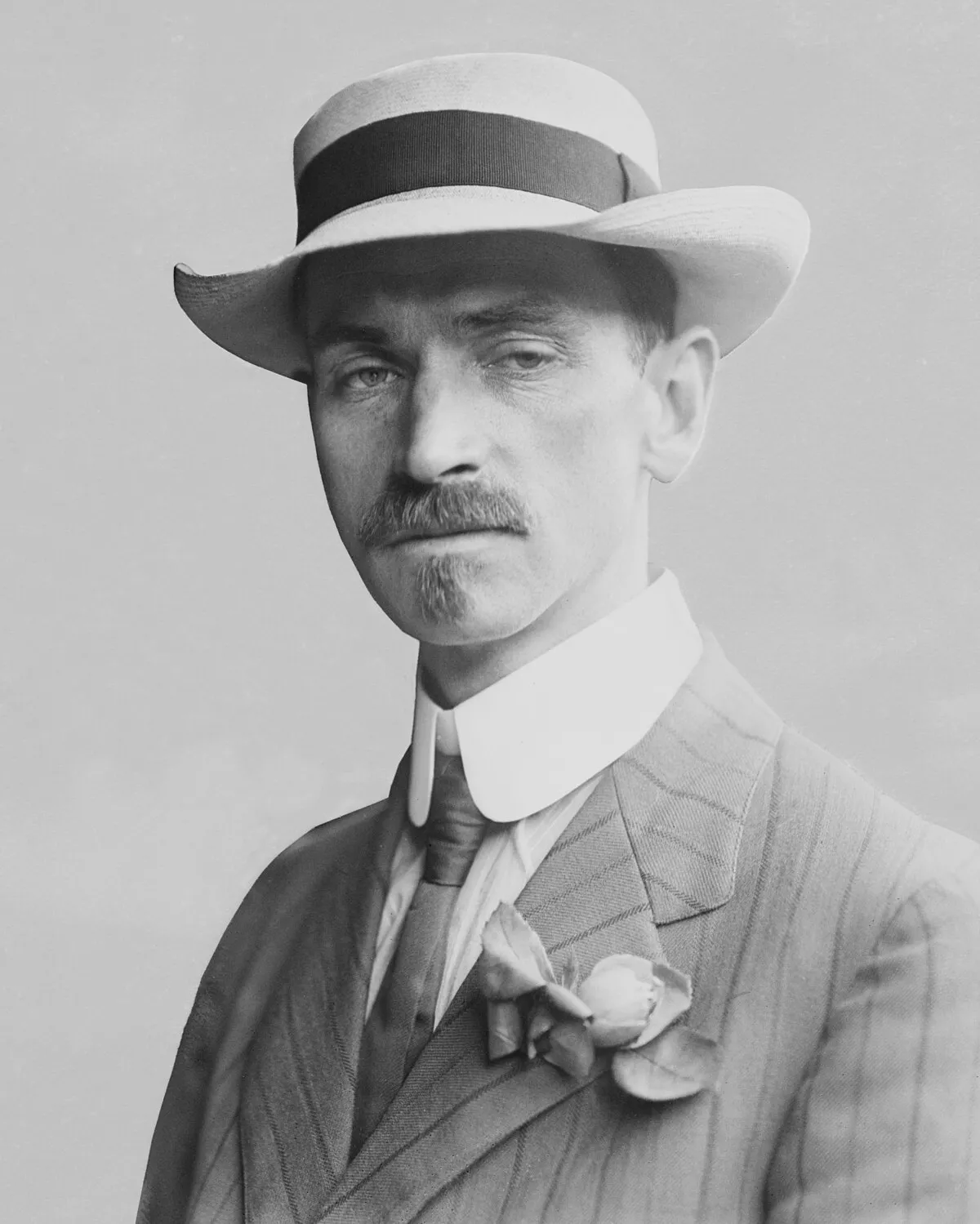 1.
1. Glenn Hammond Curtiss was an American aviation and motorcycling pioneer, and a founder of the US aircraft industry.

 1.
1. Glenn Hammond Curtiss was an American aviation and motorcycling pioneer, and a founder of the US aircraft industry.
Glenn Curtiss began his career as a bicycle racer and builder before moving on to motorcycles.
In 1908, Curtiss joined the Aerial Experiment Association, a pioneering research group, founded by Alexander Graham Bell at Beinn Bhreagh, Nova Scotia, to build flying machines.
Glenn Curtiss's company built aircraft for the US Army and Navy, and, during the years leading up to World War I, his experiments with seaplanes led to advances in naval aviation.
Glenn Curtiss was born in 1878 in Hammondsport, New York, situated on the southern tip of Keuka Lake, one of the Finger Lakes in New York.
Glenn Curtiss's mother was Lua Curtiss nee Andrews and his father was Frank Richmond Curtiss a harness maker who had arrived in Hammondsport with Glenn's grandparents in 1876.
Glenn Curtiss had a younger sister, Rutha Luella, born in Hammondsport.
Glenn Curtiss figured out how to speed up the process of stenciling and built a "stencil machine": a rack with a brush on a hinge which would stencil one hundred paper strips with a single stroke of the brush.
On March 7,1898, Curtiss married Lena Pearl Neff, daughter of Guy L Neff and Jenny M Potter, in Hammondsport, New York.
Glenn Curtiss began his career as a Western Union bicycle messenger, a bicycle racer, and bicycle-shop owner.
In 1902, Glenn Curtiss began manufacturing motorcycles with his own single-cylinder engines.
Glenn Curtiss remained "the fastest man in the world", the title the newspapers gave him, until 1911, and his motorcycle record was not broken until 1930.
In 1904, Glenn Curtiss became a supplier of engines for the California "aeronaut" Tom Baldwin, who inspired Glenn Curtiss to pursue aviation.
In 1907, Alexander Graham Bell invited Glenn Curtiss to develop a suitable engine for heavier-than-air flight experimentation.
Aerial competitions and demonstration flights across North America helped to introduce aviation to a curious public; Glenn Curtiss took full advantage of these occasions to promote his products.
On May 29,1910, Glenn Curtiss flew from Albany to New York City to make the first long-distance flight between two major cities in the US For this 137-mile flight, which he completed in just under four hours including one stop to refuel, he won a $10,000 prize offered by publisher Joseph Pulitzer and was awarded permanent possession of the Scientific American Trophy.
In June 1910, Glenn Curtiss provided a simulated bombing demonstration to naval officers at Hammondsport.
Jacob E Fickel demonstrated the feasibility of shooting at targets on the ground from an aircraft with Curtiss serving as pilot.
Glenn Curtiss custom built floats and adapted them onto a Model D so it could take off and land on water to prove the concept.
On February 24,1911, Glenn Curtiss made his first amphibious demonstration at North Island by taking off and alighting on both land and water.
Back in Hammondsport, six months later in July 1911, Glenn Curtiss sold the US Navy their first aircraft, the A-1 Triad.
Glenn Curtiss trained the Navy's first pilots and built their first aircraft.
Around this time, Glenn Curtiss met retired British naval officer John Cyril Porte, who was looking for a partner to produce an aircraft with him to win the Daily Mail prize for the first transatlantic crossing.
In 1912, Glenn Curtiss produced the two-seat Flying Fish, a larger craft that became classified as a flying boat because the hull sat in the water; it featured an innovative notch in the hull that Porte recommended for breaking clear of the water at takeoff.
Glenn Curtiss correctly surmised that this configuration was more suited to building a larger long-distance craft that could operate from water, and was more stable when operating from a choppy surface.
Glenn Curtiss created the JN-4 "Jenny" for the Army, and the N-9 seaplane version for the Navy, designed as a trainer.
Glenn Curtiss cashed out his stock in the company for $32 million and retired to Florida.
Glenn Curtiss continued on as a director of the company, but served only as an adviser on design.
Glenn Curtiss co-developed the city of Hialeah with James Bright and developed the cities of Opa-locka and Miami Springs, where he built a family home, known variously as the Miami Springs Villas House, Dar-Err-Aha, MSTR No 2, or Glenn Curtiss House.
Glenn Curtiss's frequent hunting trips into the Florida Everglades led to a final invention, the Adams Motor "Bungalo", a forerunner of the modern recreational vehicle trailer.
Glenn Curtiss later developed this into a larger, more elaborate fifth-wheel vehicle, which he manufactured and sold under the name Aerocar.
Glenn Curtiss, working with the head of the Smithsonian Institution Charles Walcott, sought to discredit the Wrights and rehabilitate the reputation of Samuel Langley, a former head of the Smithsonian, who failed in his attempt at powered flight.
Secretly, Glenn Curtiss extensively modified Langley's 1903 aerodrome then demonstrated in 1914 that it could fly.
Glenn Curtiss died on July 23,1930, in Buffalo, New York, of complications from an appendectomy.
Glenn Curtiss was inducted into the National Aviation Hall of Fame in 1964, the International Aerospace Hall of Fame in 1965, the Motorsports Hall of Fame of America in 1990, the Motorcycle Hall of Fame in 1998, and the National Inventors Hall of Fame in 2003.
Glenn Curtiss' famed airplane appeared on a 1918 issue US airmail stamp.
Glenn Curtiss himself appeared on the cover of Time in 1924.
Glenn Curtiss Drive is in Addison, TX, and Curtiss Parkway in Miami Springs, FL.